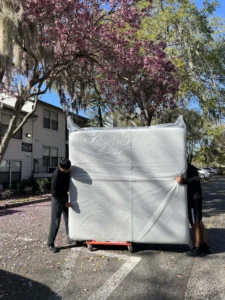Moving from a Rural Area to the City: How to Adjust to Urban Life
| Getting your Trinity Audio player ready... |
 Moving from a rural area to the city is a big change, and it comes with its own set of challenges. Whether you’re trading in wide-open spaces for the hustle and bustle of city life for work, education, or a new adventure, adjusting to urban living can be an exciting but overwhelming experience. Here’s how to make the transition from rural to urban life as smooth as possible.
Moving from a rural area to the city is a big change, and it comes with its own set of challenges. Whether you’re trading in wide-open spaces for the hustle and bustle of city life for work, education, or a new adventure, adjusting to urban living can be an exciting but overwhelming experience. Here’s how to make the transition from rural to urban life as smooth as possible.
Embrace the Change in Pace
One of the biggest differences between rural and urban living is the pace of life. In the city, everything moves faster – from the traffic to the people walking down the street. It’s normal to feel overwhelmed at first, but give yourself time to adjust. Start by exploring your new surroundings at your own pace. Take walks around your neighborhood, visit local cafes, and familiarize yourself with public transportation.
Get to Know Your Neighborhood
City life can feel impersonal at times, but getting to know your neighborhood can help you feel more at home. Introduce yourself to your neighbors, check out community events, and explore local parks and shops. Building a sense of community will make the city feel less intimidating and more like home.
Learn to Love Public Transportation
If you’re used to driving everywhere, adjusting to public transportation might be a challenge. But learning how to navigate buses, trains, and subways is essential for city living. Start by downloading transportation apps that provide real-time updates on schedules and routes. And don’t be afraid to ask for help if you’re unsure of where to go – most people are happy to point you in the right direction.
Embrace the Convenience
One of the perks of city living is the convenience. From 24-hour grocery stores to food delivery services, everything you need is just a short walk or a quick ride away. Embrace the convenience of city life by trying out new restaurants, shopping locally, and taking advantage of the variety of services available.
Find Green Spaces
If you’re used to wide-open spaces, the concrete jungle can feel claustrophobic. Seek out green spaces like parks, gardens, and nature reserves where you can escape the hustle and bustle of city life. Spending time in nature, even in an urban setting, can help you recharge and feel more grounded.
Noise Control
City life can be noisy, and it’s something that takes some getting used to. Whether it’s traffic, sirens, or the sounds of neighbors, the constant noise can be overwhelming. Invest in a good pair of earplugs or a white noise machine to help you sleep, and try to find quieter spots in the city where you can relax and unwind.
Safety First
Safety is a top priority when living in the city. Get to know the safety tips for your new area, such as keeping your belongings secure, staying aware of your surroundings, and knowing which areas to avoid at night. It’s also a good idea to familiarize yourself with the local emergency services and how to reach them.
Socialize and Make New Friends
Making new friends in the city can be a challenge, especially if you’re used to a close-knit rural community. But cities offer endless opportunities to meet new people. Join clubs, take classes, or attend events related to your interests. It might take some time, but you’ll find your tribe.
Budget Wisely
City living can be more expensive than rural life, so it’s important to budget wisely. Take time to understand the cost of living in your new area and adjust your budget accordingly. This might mean cutting back on certain luxuries or finding more affordable options for housing, groceries, and entertainment.
Keep an Open Mind
Finally, keep an open mind. Moving from a rural area to the city is a big change, but it’s also an opportunity for growth and new experiences. Embrace the differences, try new things, and don’t be afraid to step out of your comfort zone. With time, you’ll find your rhythm and start to enjoy all that urban life has to offer.
Adjusting to city life after moving from a rural area can be challenging, but it’s also an exciting opportunity for growth and new experiences. By embracing the change in pace, getting to know your neighborhood, and finding ways to make the city feel more like home, you’ll soon find yourself thriving in your new urban environment.

